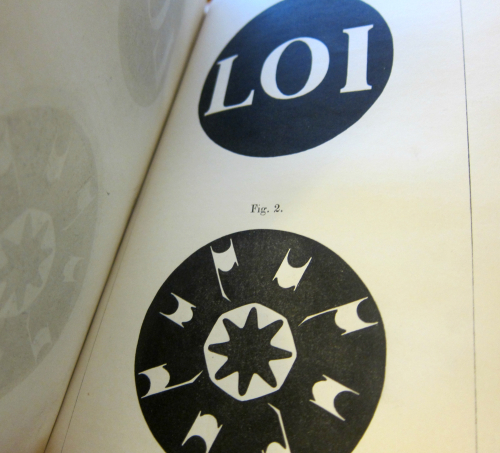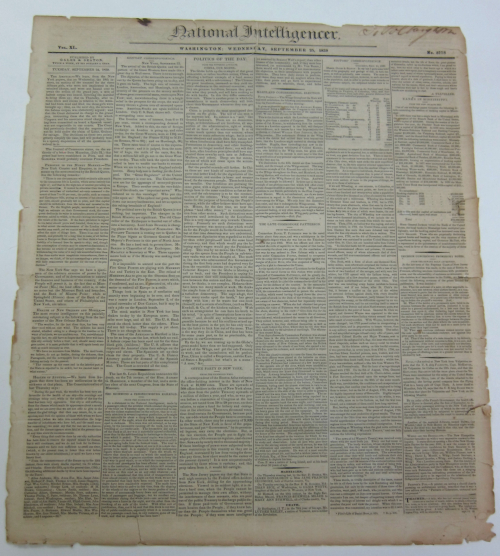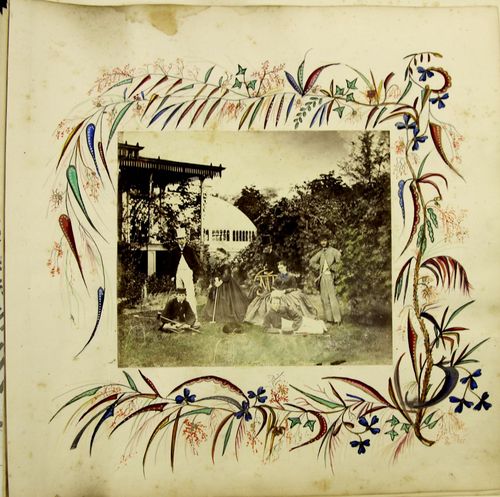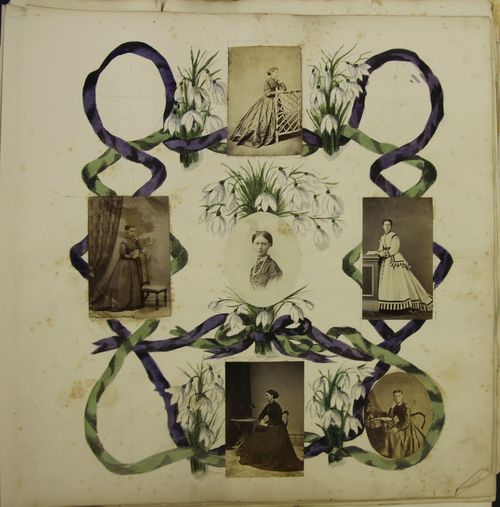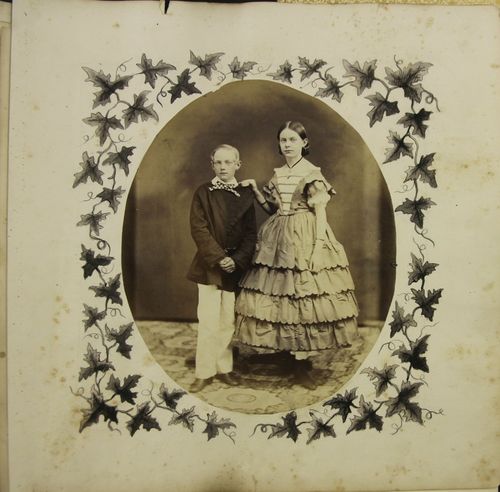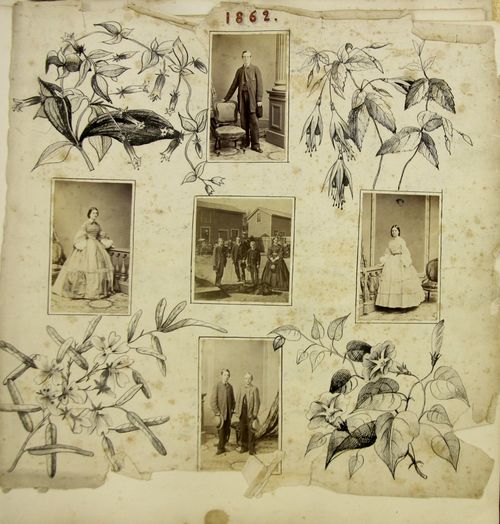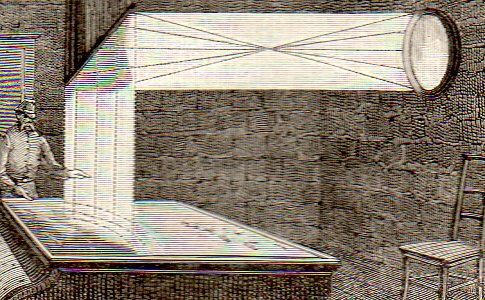[Herschel, J.F.W.] Several very early papers on photography, contained in The London, Edinburgh, and Dublin Philosophical Magazine and Journal of Science, edited by David Brewster, Richard Taylor, and others, London, printed by Richard and John E. Taylor, January-June 1843, volume XXII (third series); 8vo, viii, 576pp, with three plates (two folding. Bound in half-calf, with raised bands, and red and black pine labels; the imprint of "The Society of Writers to the Signet" embossed in a 2" gilded oval on the cover. The book is in GOOD condition, though the back cover is detached, and the front nearly so. The text is fresh and crisp. $500
Contains the following six papers by Herschel on photography and the photographic process, as well as early papers by Draper and Talbot on other aspects of photography, with the first four in part describing Herschel's introduction of the "chrysotype" process:
“Sir J. F. W. Herschel on the Action of the Rays of the Solar Spectrum on Vegetable Colours, and on some new Photographic Processes” (in four parts)5 -21; “Sir John F. W. Herschel on the Action of the Rays of the Solar Spectrum on Vegetable Colours, and on some new Photographic Processes (continued)” 107-115; “Sir John F. W. Herschel on the Action of the Rays of the Solar Spectrum on Vegetable Colours, and on some new Photographic Processes (continued)”, pp 170-180; “Sir John F. W. Herschel on the Action of the Rays of the Solar Spectrum on Vegetable Colours, and on some new Photographic Processes (concluded) “, pp 246 -252. These papers seem to be the re-appearance of an earlier,single, long paper under the same title in the Philosophical Transactions for 1842, pp. 181-214. As with the Philosophical Transactions paper, this appearance has one folding engraved plate containing several images.
Also included in the volume:
"Sir John F. W. Herschel on the Action of the Rays of the Solar Spectrum on the Daguerreotype Plate", 120 -133
And:
"Sir John FW Herschel On certain improvements on Photographic Processes described in a former Communication and on the Parathermic Rays of the Solar Spectrum" pp 508-511, in a special supplement to volume XXII
And with:
"Dr. Draper on the Tithonotype, or Art of multiplying Daguerreotypes", pp 365-368
"Mr. Talbot of the coloured Rings produced by Iodine on Silver, with Remarks on the History of Photography", pp 94 -97
And with many other interesting contributions, including:
"Mr. G. G. Stokes " on the Analytical Condition of Rectilinear Fluid Motion," in Reply to Professor Challis", pp 55
"Mr. J. P. Joule on the Electrical Origin of Chemical Heat. . . .", pp 204-208
The following are quotations from the "On the Action of the Rays of the Solar Spectrum on Vegetable Colours, and on some new Photographic Processes” papers describing the photographic process being introduced by Herschel:
"In operating on the colours of flowers I have usually proceeded as follows the petals of the fresh flowers or rather such parts of them as possessed a uniform tint were crushed to a pulp in a marble mortar either alone or with addition of alcohol and the juice expressed by squeezing the pulp in a clean linen or cotton cloth. It was then spread on paper with a flat brush and dried in the air without artificial heat or at most with the gentle warmth which rises in the ascending current of air from an Arnott stove. If alcohol be not added the application on paper must be performed immediately since exposure to the air of the juices of most flowers in some cases even for but a few minutes irrecoverably changes or destroys their colour. If alcohol be present this change does not usually take place or is much retarded for which reason as well as on account of certain facilities afforded by its admixture in procuring an even tint to be presently stated this addition was commonly but not always made..." And: "...species of action obtain almost universally. 1st The action is positive that is to say light destroys colour either totally or leaving a residual tint on which it has no further or a very much slower action. And thus is effected a sort of chromatic analysis in which two distinct elements of colour are separated by destroying the one and leaving the other outstanding. The older the paper or the tincture with which it is stained the greater is the amount of this residual tint..."
It is also worth noting the appearances of the words "positive" and "negative" in the Herschel paper "On certain improvements on Photographic Processes described in a former Communication and on the Parathermic Rays of the Solar Spectrum" (below); granted the words had appeared at least in conversation among the other Prime Movers in early photography in the 1830's, they only first appeared in printed in Herschel's paper in the Philosophical Transactions in May 1839. so we're two years past the very first appearance, though the use of those words in print even at this time was not common.
"...ground being hardly perceptibly The result was a very beautiful and perfect negative photograph..." g p 508
"In the positive cyanotype process as improved by the addition of corrosive sublimate above recommended we are furnished with another instance of a transformation effected by heat analogous to those described in Art 228 A picture prepared by this process if heated is transformed from positive to negative and from blue to brown. On keeping the blue colour is restored as well as the positive character..." In p 509
And a penultimate word from the British Journal of Photgraphy, June 16, 1905:
And lastly, this from Photography: Its Principles and Applications, by Alfred Watkins 157, 1911



